Centropyxis
Ralf Meisterfeld and Edward MitchellIntroduction
More than 130 species and many varieties have been described. Many of these descriptions are incomplete. Type species: Centropyxis aculeata (Ehrenberg, 1838).
Characteristics
In this genus we find two different shell types:
- Test bilaterally symmetrical, rounded, flattened more at front than at rear; ventral face flat; often spines at sides and rear. Pseudostome: ventral, anterior, roundish, dorsal and ventral lips recurved, invaginated, often bridged (see title illustration, br and Fig. 1) from ventral margin to dorsal face of the test. Shell can be organic or constructed with mineral particles or diatoms. Shape, number of spines and size extremely variable. These species prefer freshwater habitats. Typical representativea are C. aculeata or C. discoides (title illustration and Fig. 1).
- Shell circular or elongated in ventral view, in lateral view oral region slightly flattened, aperture subterminal, only ventral lip incurved, no bridges from ventral to dorsal face. Although some are common in freshwater habitats and sphagnum, most species of this group are found in drier mosses and humus. Typical species C. orbicularis (title illustration), Centropyxis sphagnicola or C. aerophila.
All Centropyxis have an ovular nucleus. Feeding: all types of microbiota.
References
Deflandre, G. 1929. Le genre Centropyxis Stein. Arch. Protistenk., 67:322-375.
Bonnet, L. 1989a. Données écologiques sur quelques Centropyxidae (Thécamoebiens) des sols. Bull. Soc Hist. Nat, Toulouse, 125:7-16.
Bonnet, L. & Thomas, R. 1960. Faune terrestre et d'eau douce des Pyrénées-Orientales. Thécamoebiens du sol. Vie et Milieu, 11:suppl.,1-103.
Decloitre, L. 1978. Le genre Centropyxis I. Compléments à jour au 31.12.1974 de la monographie du genre parue en 1929. Arch. Protistenk., 120:63-85.
Decloitre, L. 1979a. Le genre Centropyxis II. Compléments à jour au 31. Décembre 1974 de la monographie du genre parue en 1929. Arch. Protistenk., 121:162-192.
Decloitre, L. 1979b. Mises à jour au 31.12.1978 des mises à jour au 31.12.1974 concernant les genres Arcella, Centropyxis; Cyclopyxis; Euglypha et Nebela. Arch. Protistenk., 122:387-397.
Decloitre, L. 1982. Compléments aux publications précédentes. Mise à jour au 31.XII. 1981 des genres Arcella, Centropyxis, Cyclopyxis, Euglypha, Nebela et Trinema. Arch. Pro¬tistenk., 126:393-407.
Decloitre, L. 1986. Compléments aux publications précédentes. Mise à jour au 31. XII. 1984 des genres Arcella, Centropyxis, Cyclopyxis, Euglypha et Nebela. Arch. Protistenk., 132:131-136.
Lüftenegger, G., Petz, W., Berger, H., Foissner, W. & Adam, H. 1988. Morphologic and Biometric Characterization of Twenty-four Soil Testate Amoebae (Protozoa, Rhizopoda). Arch. Protistenk., 136:153-189.
Ogden, C. G. & Hedley, R. H. 1980. An Atlas of Freshwater Testate Amoebae. Oxford University Press, Oxford.
Title Illustrations

| Scientific Name | Centropyxis aculeata |
|---|---|
| Specimen Condition | Live Specimen |
| Identified By | Ralf Meisterfeld |
| Copyright |
©

|
About This Page
This page is being developed as part of the Tree of Life Web Project Protist Diversity Workshop, co-sponsored by the Canadian Institute for Advanced Research (CIFAR) program in Integrated Microbial Biodiversity and the Tula Foundation.

Rheinisch-Westfälische Technische Hochschule Aachen, Germany
Edward Mitchell

University of Neuchâtel
Correspondence regarding this page should be directed to Ralf Meisterfeld at and Edward Mitchell at
Page copyright © 2008 and Edward Mitchell
All Rights Reserved.
- First online 02 September 2008
- Content changed 02 September 2008
Citing this page:
Meisterfeld, Ralf and Edward Mitchell. 2008. Centropyxis . Version 02 September 2008 (under construction). http://tolweb.org/Centropyxis/124498/2008.09.02 in The Tree of Life Web Project, http://tolweb.org/




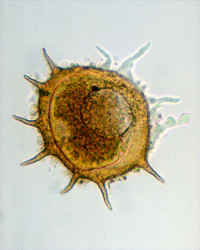
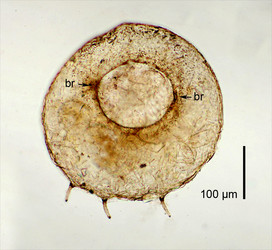
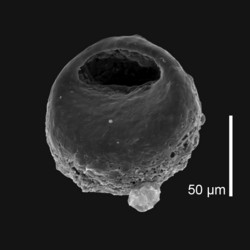
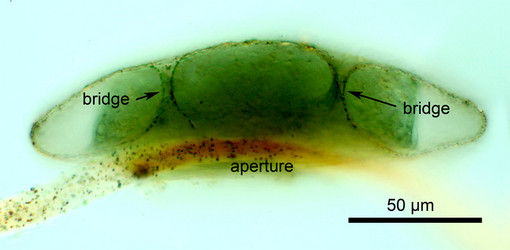

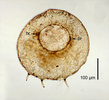
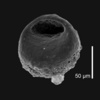


 Go to quick links
Go to quick search
Go to navigation for this section of the ToL site
Go to detailed links for the ToL site
Go to quick links
Go to quick search
Go to navigation for this section of the ToL site
Go to detailed links for the ToL site